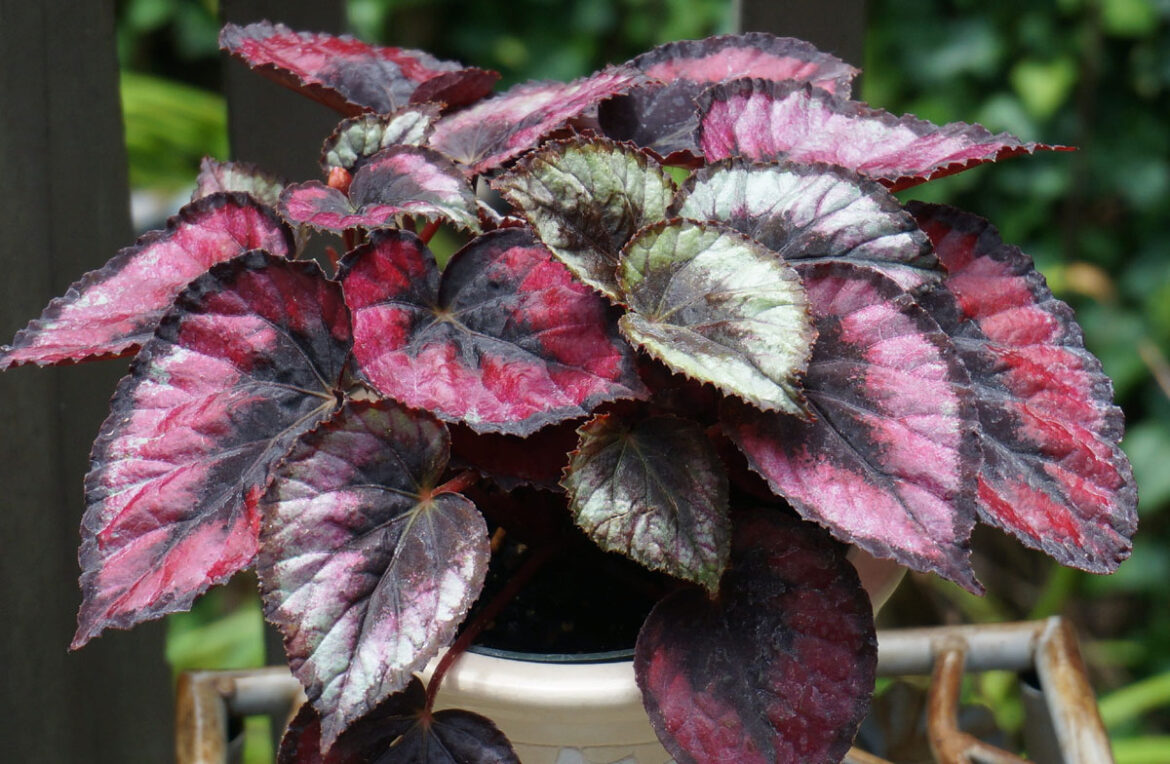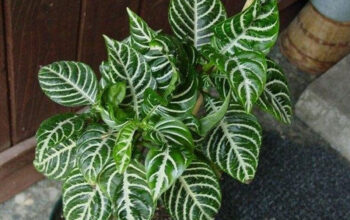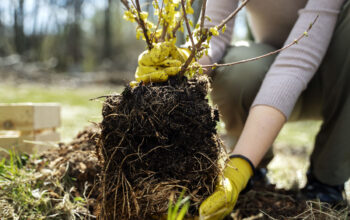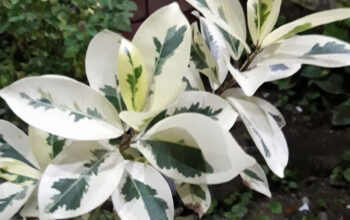Rex Begonias Plant (Begonia rex)
Begonia rex, also called the king begonia, or painted leaf begonia, is a species of flowering plant in the family Begoniaceae. This species is native to Arunachal Pradesh in southeast China, and it has been introduced to Bangladesh, Cuba, and Hispaniola. The foliage of the Rex begonias is spectacular, offering an impressive variety of colors, shapes, and textures. Leaf sizes range from 9 inches to 5 inches, while the mounding habit of these plants reaches about 12 to 18 inches high and wide—a perfect growth habit for creating stunning planting combinations with tropical perennials or annuals.
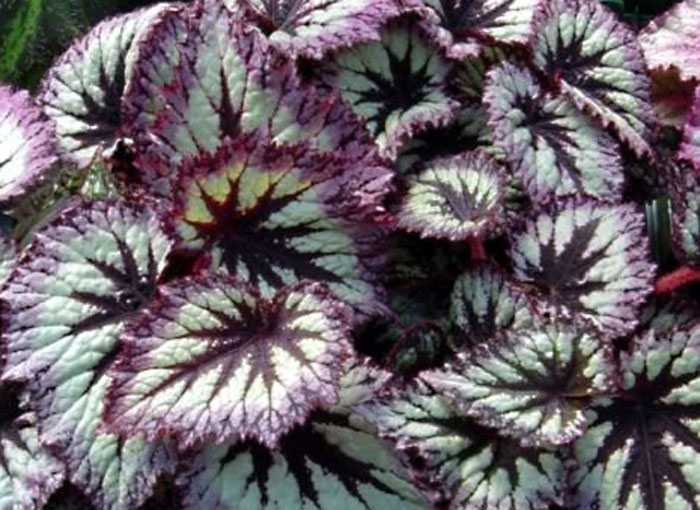
Overview Rex painted leaf begonia
Scientific name Begonia rex Common name Rex Begonia, King Begonia, Painted-leaf Begonia Plant type Houseplant, Perennial Sun Full sun to partial shade Soil Fast-draining, rich soil Soil pH 5.7–6.2 Flower colors Pink, Mix of green colours, and burgundy Blooming time Don’t grow it for flowers Zone 10-12How to Grow and Care Rex Begonias Plant
Rex Begonia’s seeds are so tiny that special care must be taken when planting them. Generally, seeds germinate two to three weeks after planting. You should immediately remove the plastic wrap or dome as soon as the seeds germinate or when seedlings appear. It is recommended to place the lights within 4 to 6 inches of the seedlings and to leave them on for 12 to 14 hours each day. There are some types of begonia seeds that will not reproduce the parent plant. You may get seedlings that look and behave differently than the original hybrid Rex Begonia if you use the seeds from the hybrid. You can propagate hybrid begonias from cuttings to produce plants identical to the parents. Cuttings taken from leaf tips will sprout from almost all begonia species. The cuttings may need to be sprayed with rooting hormones. It is also possible to propagate Rex Begonias by pinning a leaf to the bedding mix and making small incisions in the leaf veins, or by inserting a leaf (with a petiole) directly into the ground. Petioles are the stems that attach the leaf blades to the plant stems. Among the most interesting indoor plants, the rex begonia offers colorful foliage. While Rex Begonia appears exotic and difficult to grow, it is actually quite easy to grow. Due to its relatively short height, the Rex begonia makes an interesting addition to desks and tabletops, where the vibrant foliage provides a nice contrast to other houseplants.How to grow begonia
Propagation
- You can grow easily new plants by the cutting of the stem.
- The cutting of the stem at an angle from, the leaves and remove the stems around. Cut the sharp portion of the leaves.
- Crater with pencil, and then give these cuttings potted soil-filled.
- By cutting in the soil around these crater fill. Leaves should be above the soil.
- Water then gradually began to dry out the soil.
Sunlight
Bright, indirect light is ideal for Rex Begonias. For short periods of time, you can have direct sunlight, especially if it comes from an eastern window that has morning sun, which is softer. If you live in an area with strong sunlight, or during periods of the year when the sun is strongest, you should avoid too much direct sunlight. Since they do not bloom aggressively, they can tolerate less light than other begonias and thrive under fluorescent lights.Soil
Ideally, Begonia rex needs fast-draining soil. The Rex begonia does well in a wide range of pH conditions but prefers to grow in a more acidic medium. It is recommended to maintain a pH of 5.7–6.2 for peat-based soils.Water
The Rex begonia prefers moist soil that is fairly evenly distributed. It is important to keep a good balance, as these plants are easily susceptible to root rot. Begonias require about one inch of water per week when cultivated in flowerbeds. There are usually no more than two or three light rainfalls per week needed to provide that amount. Watering should be done early in the morning. It is best to water when the soil has become completely dry to the touch. However, you should not allow the soil to become too dry, or the plant will begin to wither.Temperature and Humidity
The best indoor temperature range for Rex Begonias is between 60°F and 85°F (15.5°C to 29.4°C). If the temperature drops below 58°F (14.4°C), they will stop growing. The growth of begonias slows down in freezing temperatures, and some varieties go dormant due to the lack of light during the winter. Having high humidity is not necessary for Begonia rex. However, the air in the plant’s environment cannot be dry. A constant relative humidity of 50% should be maintained near this plant at all times. In spite of the fact that high humidity isn’t necessary, it keeps the plant full, lush, and healthy.Fertilizer
Fertilize Rex Begonias when they are actively growing since they are similar to other houseplants. During the growing season, apply a water-soluble, dilute, quarter strength fertilizer once every two to three weeks. Do not fertilize your plants from October until new growth appears in the spring. Read also: How to grow and care Begonias. How to Grow Kale in winter. Growing Persian shield houseplant. Kamini flowers grow through seeds. Growing Orange in pots. 07 Most popular Kalanchoe in your garden. How to grow poppies in pots. 09 seasonal vegetables for June. 09 Different types of palms. Growing horseradish plant in your garden. For pin:

